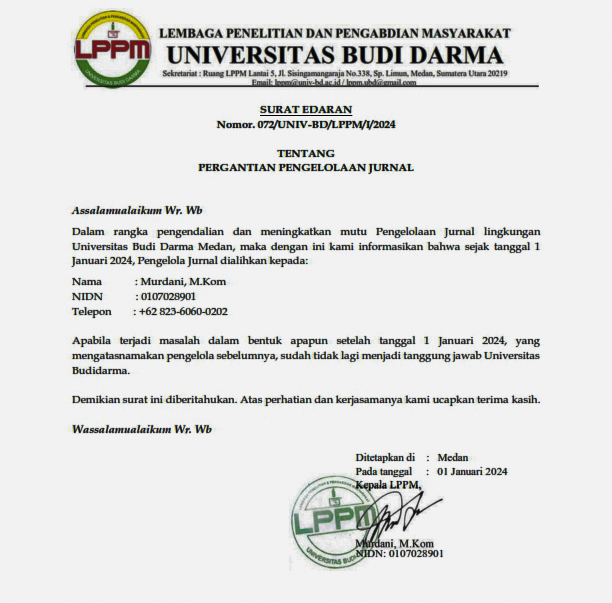Analisis Sentimen Tindakan Pemerintah Indonesia Dalam Penanganan Covid-19 Menggunakan Metode Support Vector Machine
DOI:
https://doi.org/10.30865/json.v4i2.5341Keywords:
Covid-19, Radial Basis Function, Sentiment, Support Vector Machine, TwitterAbstract
Corona Virus Disease 2019 (Covid-19) which has hit the world including Indonesia since the beginning of 2020 is an outbreak that has become a serious threat to world health. The Indonesian government is taking various actions to deal with this problem, while the public, with the existence of social media, has provided many responses to these government policies. Twitter is one of the social media that is widely used by the public to convey comments in the form of responses, suggestions, to criticism of the government regarding the handling of Covid-19. The comments that appear should be used by the government as part of the reference in evaluating a policy or action taken in handling Covid-19. So that one way that can be used to deal with this is one of the methods that exist in the domain of text mining, namely sentiment analysis. This research was conducted by analyzing sentiment using the Support Vector Machine (SVM) method with the Kernel Radial Basis Function (RBF). Tweets will be classified into positive, negative and neutral sentiments, so that the percentage of each opinion category can be known. This study uses data of 600 tweets obtained from the results of scraping using a Twitter scraper. The result of this study is that the training accuracy rate is 77% in classifying positive, negative, and neutral sentiments. From the results of the data classification, it was found that most of the tweets consisted of negative sentiments.References
A. Sarkar, G. Liu, Y. Jin, Z. Xie, and Z. J. Zheng, “Public health preparedness and responses to the coronavirus disease 2019 (COVID-19) pandemic in South Asia: a situation and policy analysis,†Global Health Journal, vol. 4, no. 4, pp. 121–132, Dec. 2020, doi: 10.1016/j.glohj.2020.11.003.
“South Korea’s Cults and Conservatives Sabotaged Virus Response.†https://foreignpolicy.com/2020/02/27/coronavirus-south-korea-cults-conservatives-china/ (accessed Dec. 08, 2022).
Who, “Coronavirus disease (COVID-19) Global epidemiological situation.â€
K. Kesehatan and L. Negara, “Tambahan Lembaran Negara Republik Indonesia Nomor 4723).â€
S. Mujani and D. Irvani, “Sikap dan Perilaku Warga terhadap Kebijakan Penanganan Wabah Covid-19,†Politika: Jurnal Ilmu Politik, vol. 11, no. 2, pp. 219–238, Oct. 2020, doi: 10.14710/politika.11.2.2020.219-238.
E. Esyudha Pratama and H. Sastypratiwi, “JIP (Jurnal Informatika Polinema) Analisis Kecenderungan Informasi Terkait Covid-10 Berdasarkan Big Data Sosial Media dengan Menggunakan Metode Data Miningâ€.
“DIGITAL 2020 INDONESIA.â€
P. Seminar and N. Geotik, “Analisis Sentiment Pada Twitter Dengan Menggunakan Metode Naïve Bayes Classifier,†2018.
A. A. Collomb, D. Joyeux, O. Hasan, and L. Brunie, “A Study and Comparison of Sentiment Analysis Methods for Reputation Evaluation.â€
B. Liu, “Sentiment analysis and opinion mining,†Synthesis Lectures on Human Language Technologies, vol. 5, no. 1, pp. 1–184, 2012, doi: 10.2200/S00416ED1V01Y201204HLT016.
W. C. F. Mariel, S. Mariyah, and S. Pramana, “Sentiment analysis: A comparison of deep learning neural network algorithm with SVM and naïve Bayes for Indonesian text,†in Journal of Physics: Conference Series, Apr. 2018, vol. 971, no. 1. doi: 10.1088/1742-6596/971/1/012049.
V. Kevin, S. Que, : Analisis, S. Transportasi, A. Iriani, and H. D. Purnomo, “Analisis Sentimen Transportasi Online Menggunakan Support Vector Machine Berbasis Particle Swarm Optimization (Online Transportation Sentiment Analysis Using Support Vector Machine Based on Particle Swarm Optimization),†2020. [Online]. Available: www.tripadvisor.com,
D. Darwis, E. Shintya Pratiwi, A. Ferico, and O. Pasaribu, “Penerapan Algoritma Svm Untuk Analisis Sentimen Pada Data Twitter Komisi Pemberantasan Korupsi Republik Indonesia,†2020.
A. Putra, D. Haeirudin, H. Khairunnisa, and R. Latifah, “Analisis Sentimen Masyarakat Terhadap Kebijakan PPKM Pada Media Sosial Twitter Menggunakan Algoritma Svm,†2021.
F. Adams, L. Ernawati, and N. Chamidah, Analisis Sentimen Vaksin COVID-19 pada Twitter Menggunakan Algoritma Support Vector Machine. 2021.
A. M. Pravina, I. Cholissodin, and P. P. Adikara, “Analisis Sentimen Tentang Opini Maskapai Penerbangan pada Dokumen Twitter Menggunakan Algoritme Support Vector Machine (SVM),†2019. [Online]. Available: http://j-ptiik.ub.ac.id
A. P. Gopi, R. N. S. Jyothi, V. L. Narayana, and K. S. Sandeep, “Classification of tweets data based on polarity using improved RBF kernel of SVM,†International Journal of Information Technology 2020, pp. 1–16, Jan. 2020, doi: 10.1007/S41870-019-00409-4.
I. A. Muis and M. Affandes, “Penerapan Metode Support Vector Machine (SVM) Menggunakan Kernel Radial Basis Function (RBF) Pada Klasifikasi Tweet,†Jurnal Sains, Teknologi dan Industri, vol. 12, no. 2, pp. 189–197, 2015, [Online]. Available: http://ejournal.uin-suska.ac.id/index.php/sitekin
X. hui Tan, W. hua Bi, X. liang Hou, and W. Wang, “Reliability analysis using radial basis function networks and support vector machines,†Comput Geotech, vol. 38, no. 2, pp. 178–186, Mar. 2011, doi: 10.1016/J.COMPGEO.2010.11.002.
Downloads
Published
How to Cite
Issue
Section
License

This work is licensed under a Creative Commons Attribution 4.0 International License
Authors who publish with this journal agree to the following terms:
- Authors retain copyright and grant the journal right of first publication with the work simultaneously licensed under Creative Commons Attribution 4.0 International License that allows others to share the work with an acknowledgment of the work's authorship and initial publication in this journal.
- Authors are able to enter into separate, additional contractual arrangements for the non-exclusive distribution of the journal's published version of the work (e.g., post it to an institutional repository or publish it in a book), with an acknowledgment of its initial publication in this journal.
- Authors are permitted and encouraged to post their work online (e.g., in institutional repositories or on their website) prior to and during the submission process, as it can lead to productive exchanges, as well as earlier and greater citation of published work (Refer to The Effect of Open Access).





